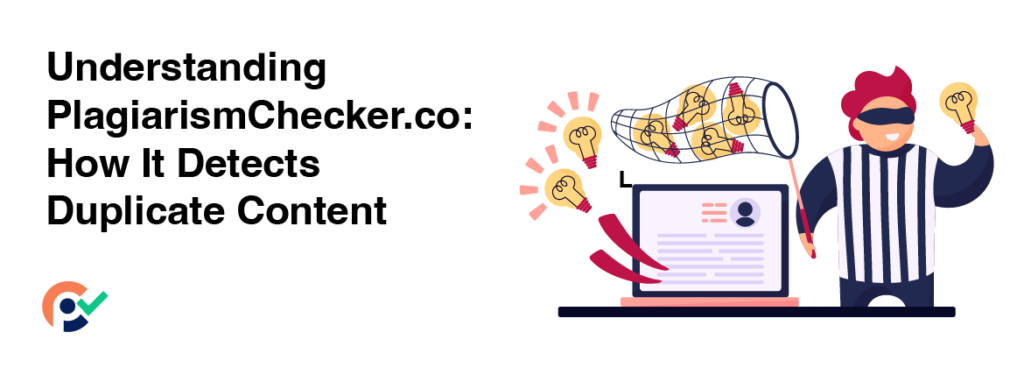
Understanding Plagiarismchecker.co: How It Detects Duplicate Content
What’s scarier than writer’s block? Plagiarism!
No matter how smart you are in paraphrasing or citing, plagiarism checkers will rummage through your work in a few seconds and find the most trivial similarities. Even if you produced the content from scratch, there is a chance of similarities in your work compared to other readily available information. This isn’t your fault; that’s where the plagiarism checker helps!
The good thing is that Plagiarismchecker.co saves the day! This reliable tool offers an advanced solution to all of your plagiarism problems.
While you upload a file and wait for Plagiarismchecker.co to do its magic, specific processes happen behind the screen. This blog will help you understand how the detection process works so you’re all set before sharing.
But before we explain Plagiarismchecker.co’s background action, you must understand plagiarism and why it is a huge deal.
What is Plagiarism?
Keeping it simple, plagiarism is anything similar to another, especially in terms of semantics or context. Ironically, even ideas can be plagiarized, but with our high-quality plagiarism checker, you can confidently ensure originality.
How Does Plagiarismchecker.co Detect Duplicate Content?
Plagiarismchecker.co offers quick and accurate results by focusing on these critical factors compared to other engines.
- This efficient tool can quickly scan documents and does not require much time to obtain accurate results.
- Its reliable engine features real-time web crawling to compare your data with existing and new information.
- Plagiarismchecker.co can easily process cross-referencing and cross-language detection. It can also translate other forms of information.
- Notifies of accidental plagiarism in cases where citations are inaccurate.
- Access a vast database catalog, including private academic content, to avoid unchecked plagiarism or self-plagiarism.
How Do Plagiarismchecker.co Works?
Here’s a simple but detailed breakdown of how Plagiarismchecker.co works so you know which tool is worthwhile the next time you want an accurate plagiarism report.
Text Preprocessing
It all begins with the most basic tasks. Each alphabet, word, and phrase is stripped of its format and sent for processing. In culinary terms, all the items are cleaned and prepared to make the result satisfactory.
Text Tokenization
Next up is tokenization, which is pretty self-explanatory. Once the text is peeled off its formats and fonts, it is broken into bits or tokens. These tokens are small fragments of individual words and phrases.
These tokens can be easily detected through internet portals as they are smaller and allow more matches to appear in the algorithm.
Shingling
Shingling is a process where sentences and words are reduced to bits, allowing more precise comparison. Plagiarismchecker.co is more advanced than other portals and detects such patterns for comparison. If the shingles match, the content is marked as plagiarized.
Hashing / Fingerprinting
Hashing and shingling are related. Here’s how it works: Every shingle that the tool makes is converted into a hash or a unique number. These hashes are unique, like fingerprints.
Just like every fingerprint has its pattern and doesn’t match anyone else’s — not your own — these hashes store the original text for future comparison and plagiarism detection.
Indexing and Storing Sources
The next step in Plagiarismchecker.co’s detection process is indexing. These indexes help detect plagiarism by comparing your content with existing ones.
The internet has made it easy for everyone to cite from over 3.4 billion pages. With such a staggering number of citations available, Plagiarismchecker.co can go through almost all web pages to find similarities.
Data Comparison
Data comparison is one of the significant processes of Plaigiarismchecker.co. Drawing similarities and comparisons between the information provided and available is crucial as it allows transparency and assists in referencing if needed. Data comparison is the nexus of Plagiarismchecker.co’s processes.
Remember, when the tool compares your data with the one available on the internet, any incorrect entry of a reference or citation can be flagged.
Matching Algorithm
The algorithmic part of the entire process is the most technical one. This reliable plagiarism detector incorporates different factors, such as n-gram analysis, string matching, the NLP algorithm, and semantic analysis, to check for plagiarized content.
Semantic Analysis
If you have managed to beat the rest of the processes, semantic analysis might give you a hard time. Plagiarismchecker.co advanced tool not only compares texts but also runs a keyword and phrase analysis to make sure that the context of the new content isn’t similar to existing ones.
Even if the sentence structure is changed altogether and synonyms are used to create a new sentence instead of the original text, the semantic analysis will flag the text based on its similarities in contextual form.
Threshold Adjustment
This step decides where to draw the line when it comes to plagiarism. This competent plagiarism-checking portal’s threshold adjustment scans all the similarities detected and determines whether or not they qualify as plagiarized content. You can also set a limit that fits your requirements.
Report Generation
Once all the rigorous processing is over, the tool will generate a report of the content. Only a certain percentage is shown in some portals, but the plagiarized content remains unknown to the author. On the other hand, this proficient plagiarism checker highlights the text and cites the sources from which the text is copied or referenced.
Conclusion
Plagiarism is avoidable in most cases, but if you somehow get flagged for it, there are simple ways to avoid it, and it begins with the detection through plagiarismchecker.co. Once you encounter plagiarized phrases or sentences, you can replace them with unique text to avoid any nuisance.







